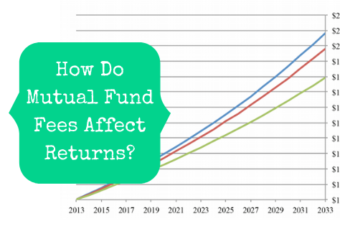
Last month, we talked about the different kinds of fees that you may pay to own shares in a mutual fund. This month, we are going to go into a little more depth on loads, or sales charges. While they are listed plainly as percentages, calculating them is not nearly as easy as you would think.
How Are Mutual Funds Valued?
First, we need to review a few of the facts about mutual funds. I say review, but this is probably all new for most people. I’ll try to make it as clear as possible.
Mutual funds are actually investment companies. They are companies that buy investments to create a portfolio of stocks and bonds and things like that. Then they sell shares of that portfolio to people like you and me.
The shares of mutual funds are not traded on secondary markets like stocks and bonds. Rather, you purchase shares directly from the mutual fund company. Because there is not an active market for mutual fund shares, you cannot determine a price based on supply and demand the way you do for stocks. Instead, their price is based on the value of the assets in their portfolio. It is called the net asset value (NAV) and it is simply the net worth of the fund divided by the number of shares outstanding.
How To Calculate Mutual Fund Loads
A lot of mutual funds charge fees, or loads, when you purchase them. The load is not listed as a dollar amount but rather a percent. The percent does not apply to the NAV, though. This is where it gets confusing and a bit misleading.
The loading charge is stated as a percentage of the offer price, which is different than the actual value of the share. The offer price is calculated as the NAV divided by one minus the load. It’s easiest to show with an example.
NAV = $20
Load = 5.75%
Offer Price = $20 / (1-0.0575) = $21.22
Fee (Load) = 0.0575 x $21.22 = $1.22
The offer price is calculated so that what remains after the fee is paid is the NAV. Yet, that means that the actual fee paid is a higher percentage of the NAV than the stated load. With the above example, the $1.22 fee is actually 6.1% of the $20 NAV, which is higher than the stated load of 5.75%.
As you can see, the effective loading charge based on NAV is higher than the stated fee. This is important to remember because every dollar that you pay in fees is one dollar less than you get to invest for growth. Mutual fund fees can have a major effect on returns over the long-run, so we will look into that in more depth next month.


